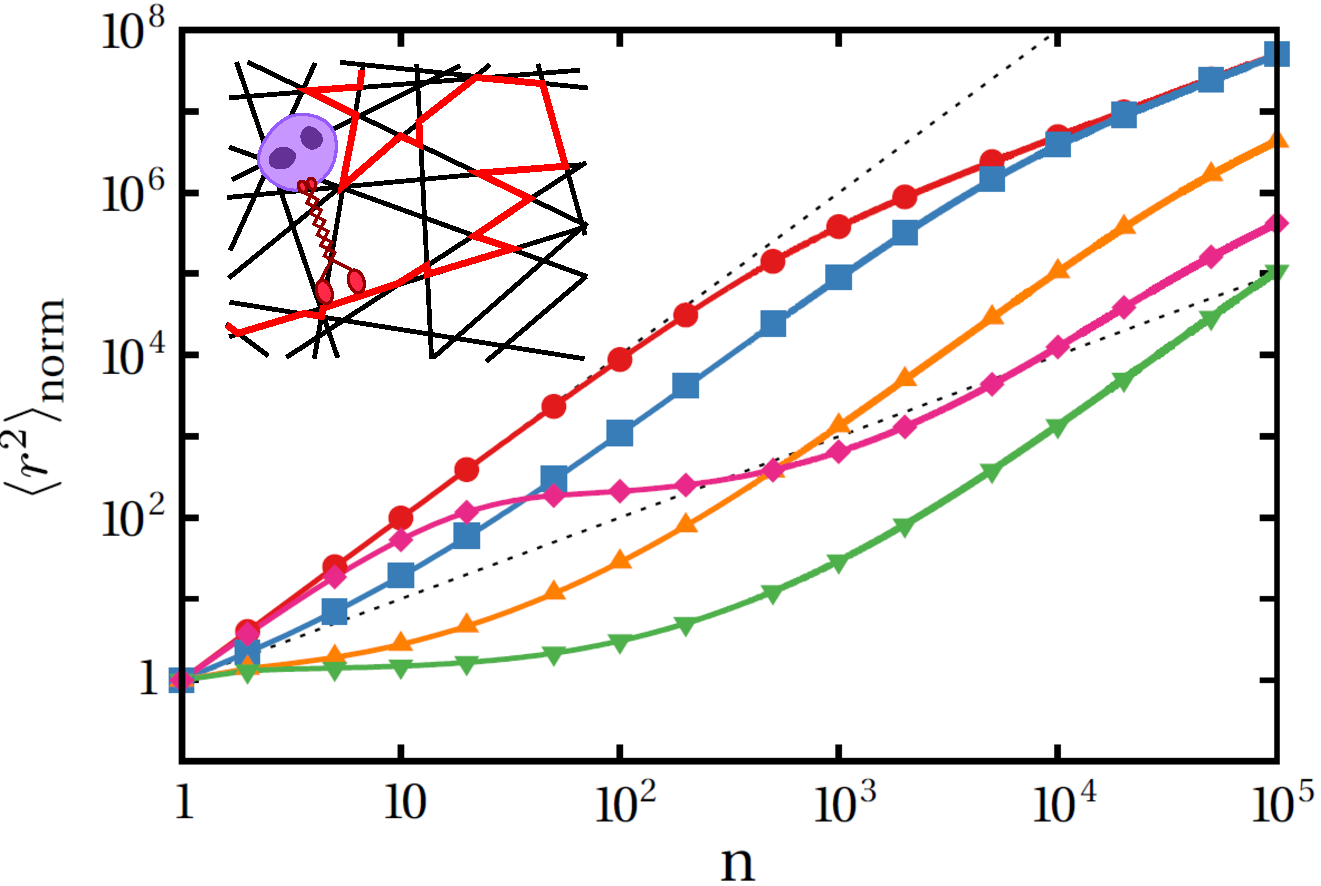AG — Prof. Heiko Rieger — Statistical Physics
Run-and-pause dynamics of cytoskeletal motor proteins

In order to maintain proper functioning, cells have to control the spatiotemporal spreading and diffusive properties of cargo particles. Cytoskeletal motor proteins are involved in major intracellular transport processes and exhibit distinct states of motility: active motion along the filaments, and pause phases in which they remain stationary for a finite time interval. The transition rates between motion and pause states are considerably affected by changes in environmental conditions which influences the diffusive properties of cargo particles. By considering the motion of molecular motors on a single filament as well as a dynamic filamentous network, we present a coarse-grained random walk description and an analytical model for the dynamics of self-propelled particles which undergo frequent pause phases. We further validate the theoretical predictions by performing extensive Monte Carlo simulations.
Within an analytical framework based on a master equation formalism, the model is able to derive the temporal evolution of the moments of displacement. As a consequence of the interplay between the stepping strategy of the motor proteins and the structural characteristics of the cytoskeletal network diverse anomalous diffusive regimes emerge. Multiple crossovers between different types of anomalous diffusion occur in response to alterations of the state transition rates. The crossover time to the asymptotic diffusive or ballistic limit varies by several orders of magnitude. We further address the role of initial conditions of motion on the resulting dynamics.
The presented random walk model is a general approach to various transport phenomenon. It is also of relevance for modeling transport in neuronal dendrites which possess highly dynamic cell compartments, called spines. Dendritic spines serve as traps for cargo particles and play a determinant role in the functionality of the nervous system. Alterations in spine density or morphology, which emerge during development or in response to neurological diseases, cause changes in the anomalous diffusive transport.
References
| Persistent-random-walk approach to anomalous transport of self-propelled particles |
|
| Phys. Rev. E 91, 062715 (2015) | [pdf] |
| Anomalous Diffusion of Self-Propelled Particles in Directed Random Environments |
|
| Phys. Rev. E (Rapid Communications) 90, 030701(R) (2014) | [pdf], [arXiv] |
Legal notice (Impressum) Privacy policy



